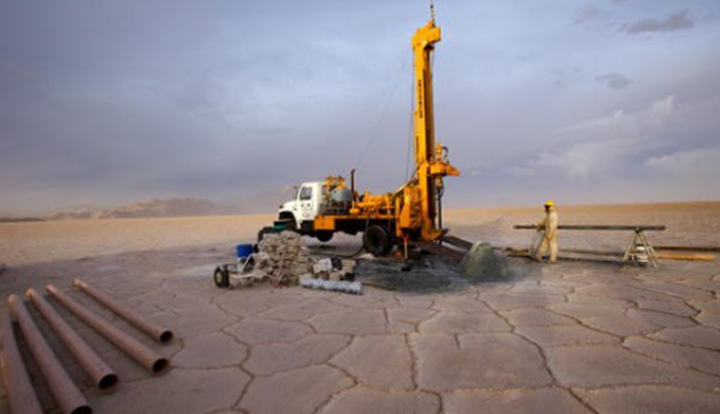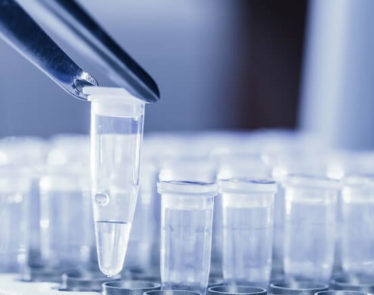
Are you looking to start investing in lithium? If so, keep an eye out for LKE’s ongoing lithium projects. Lake Resources (LKE) put together a number of lithium projects in November 2016 and they are currently preparing for a drill program at its key project, Kachi Lithium Brine Project. This project is just one asset of LKE’s in the ‘Lithium Triangle’. The Lithium Triangle is the primary source of half the globe’s lithium and it is located in a region in northern Argentina and Chile. In Argentina, Lake Resources has one of the largest landholdings portfolios. Projects designed by Lake Resources sit with those of the world’s biggest producer of lithium (Albemarle with a US$11.8 billion cap) and the world’s second biggest producer, AU$57million Orocobre, which is a mining company based in Australia.
Currently, Lake Resources has a market capitalization under $12 million, however, there is significant potential in their three lithium brine projects and their hard-rock pegmatite project. Just keep in mind that these projects are still in infancy and anyone looking to make lithium investments with Lake Resources should consult a financial advisor before doing so.
Additionally, the Kachi Project just produced positive brine sampling results. The results were over 200 mg/L lithium and these results rounded off at 204 mg/L lithium which shows promising early indicators when combined with earlier samples up to 322 mg/L.
Lake Resources Plans to Drill at Kachi:
Along with Kachi, Lake Resources has two other lithium brine projects, which are located in the far north next to Orocobre in the Jujuy Province. Also, as we speak, Lake Resources has an ongoing lithium pegmatite project in the province of Catamarca.
With multiple projects being carried out at the same time, Lake Resources plans to gather enough evidence from their four projects in order to put together a Scoping Study and a JORC Resource estimate. More importantly, Lake Resources is hoping to further discussions with prospective offtake partners. So far, Lake Resources has given itself the chance to succeed in their projects and many predict that they are on the verge of uncovering a major lithium resource. Furthermore, following a $1.2 million capital raising in February 2017, Lake Resources has $18 million (in cash) on hand with no debt, which will see them through all of their projects. For anyone thinking about investing in lithium, now might be the time to get acquainted with Lake Resources. As LKE begins drilling, it is likely to attract a rush of investors.
In the hopes of joining the ranks of the top lithium producers in Argentina, Lake Resources has commenced an exploration program to explore and develop prime lithium projects in the region. Lake Resources has three lithium brine projects and brine deposits represent roughly 66% of global lithium resources. All of LKE’s projects, including their Kachi Lithium Brine Project, are located in South America’s ‘Lithium Triangle’. The Kachi project involves an assortment of leases and lease applications around a salt lake in a 100 km long basin.
For those interested in making various lithium investments, you might want to consider investing in the Kachi project. The Kachi Lithium Brine Project, located within the lithium hub of the Catamarca province, is adjacent to the Antofalla development project and it sits roughly 100 km south of FMC’s Hombre Muerto Lithium brine production operation and Galaxy’s Sal de Vida project.
Along with the Kachi project, LKE has another project in the Catamarca province known as the Ancasti Pegmatites project which is on 70,000 hectares. In addition, LKE has the Olaroz/Cauchari Brines project (19,000Ha) and the Paso Brines project (29,000Ha) in the Jujuy province.
The Kachi Lithium Brines Project is a combined mining lease package which consists of 52,000 hectares of granted mining leases owned by Lake Resources. As mentioned, these mining leases are placed around a salt lake within a basin that is almost 100 kilometers long. It is important to note that all of these mining leases have been granted exploration. In order to fund the project, Lake Resources completed a capital raise which brought in AU$1.2 million. Following the completion of their capital raise, Lake Resources has since conducted various other samples as it prepares to start drilling in the ‘Lithium Triangle.’
One advantage of Lake Resources is that this company has the ability to recognize that we live in a pro- lithium environment, but it is still small enough that they can branch into new projects if they desire to do so. Regardless, Lake Resources is changing the industry as we know it, so for anyone thinking about investing in lithium, add this to your portfolio.
Drilling Is On The Way to LKE’s Kachi Project in Argentina
Lake Resources is moving at full speed towards the drill program at the Kachi Brine Project. Positive results continue, with the latest sampling results released in April which show over 200 mg/L Lithium recorded from near-surface auger brine sampling. When combined with earlier samples which show 322 mg/L lithium, these results are considered to be extremely positive as the project is still in infancy.
These results support the company’s goal to start drilling in the upcoming weeks as they want to test the lithium bearing aquifers below the surface. Additionally, the brine sample results are better than Albemarle’s (NYSE:$ALB) Antofalla Project. However, these results might just show the project’s potential rather than a definite direction that the company is heading in. This is because both sampling tests were taken at the borders of the salt lakes rather than closer to the center of the lake which is where you would expect to find more lithium. Near-surface samples were gathered from the groundwater in auger holes to depths roughly 20-170cm, beneath a 10-40cm thick salt crust. That said, if future brine sampling is conducted closer to the center of the salars, future results could be even more promising.
Samples were not able to be taken from the center of the lake due to limitations caused by the weather. The desert land surrounding the Kachi project experienced the first recorded rainfall in five years. However, even though the samples were limited to the borders of the lake, results were high enough for Lake Resources to decide to continue with the project and commence the drill program.
This Kind of Project Has Never Been Drilled Before:
As drilling commences, results will start to appear on the market, which will provide an opportunity for price upswing. With that said, it is difficult to say what those results will be. For that reason, anyone who is thinking about investing in lithium and is leaning towards this stock, use caution in the upcoming months when making your lithium investments.
Lake Resources announced in March that they had expanded the Kachi project in Catamarca with 2.500 ha of leases. With around 90% of leases approved for exploration, these additional leases provided the Kachi project key areas of mining title to consolidate the area.
LKE’s management is hopeful about their drilling project, but the potential of the lithium-bearing lake will only be discovered once the drill-bits start turning. As mentioned, LKE’s sampling results showed higher grades of lithium at the Kachi project than at the Antofalla project. Therefore, Lake Resources has every right to feel optimistic about the lake’s true potential. Aside from Albemarle’s Antofalla project, Kachi is close to a number of other projects including, the Hombre Muerto Lithium Brine production operation (FMC) and the Sale de Vida project (Galaxy). Add these projects to your watch list if you are thinking about investing in lithium or have made lithium investments in the past, as all four are within South America’s ‘Lithium Triangle’.
In 2016, changes were made in the Argentine government, which resulted in major companies, including Lake Resources, starting production in the Lithium Triangle. Following the changes, Lake Resources locked down key tenement packages before major companies rushed in. As a result, it holds one of the largest tenement packages in the region.
It is worth noting for anyone who is thinking about making lithium investments in Lake Resources, that there is a Toronto company with very similar assets to that of LKE’s tenements. This company, LSC Lithium Corp., was first listed in February and it had a market capitalization ten times the size of Lake Resources market cap. Today, LSC is valued at C$130 million, despite their property holdings being extremely similar to the A$11M capped Lake Resources.
Keep in mind that the performance of the products in the past should not be taken as a guarantee for what future performances will be like. If you are thinking about LSC lithium investing, use caution as this product is subject to a fluctuating market.
Finding the Hidden Supply of Lithium at Kachi:
As mentioned, there have been promising results at Kachi, so Lake Resources needs to focus on maximizing that value. Currently, LKE has A$1.8 million in the bank and they are set to starting drilling throughout the coming months. Additionally, in an attempt to boost the potential at the Kachi Project, Lake Resources will be releasing a high volume of news. That said, the results of drilling might not be available immediately, but it’s very likely that surrounding companies and projects will have advancements to report.
It’s important to keep in mind that there is still a speculative stock so investors looking to make lithium investments in this stock should seek financial advice beforehand.
Overall, the takeaway here is this: All of the projects mentioned above suggest that there is significant potential in the lithium market and Lake Resources, especially with its holdings in the Kachi Project, has found itself in a location that has plenty of room to grow. If you’re looking to make lithium investments in Lake Resources, keep an eye out for news flow in the coming weeks and further into the year, as they plan on using their results to create a scoping study and initial resource.
Featured Image: Twitter







